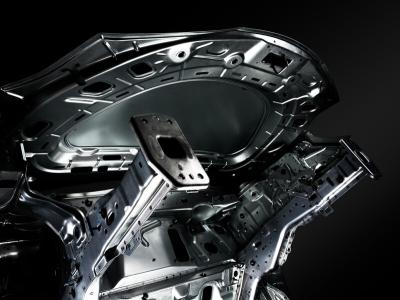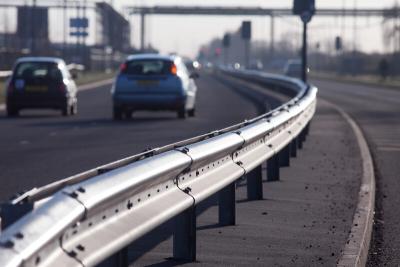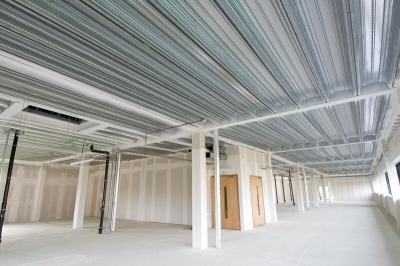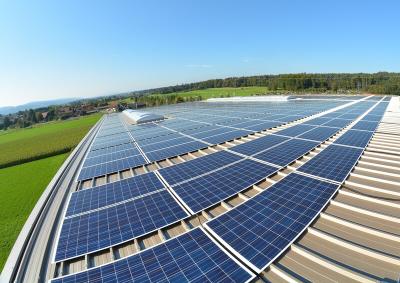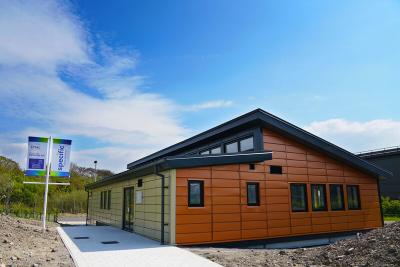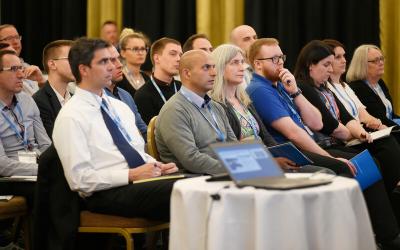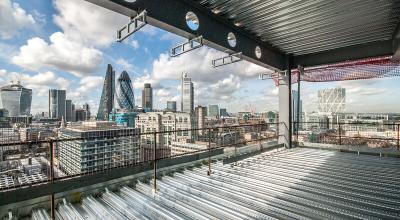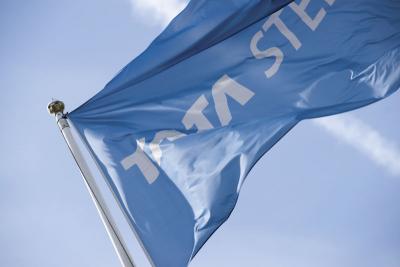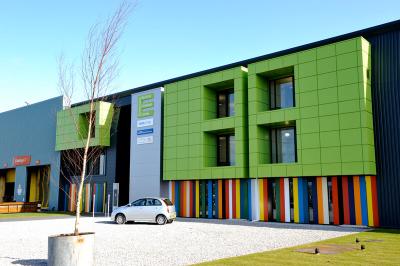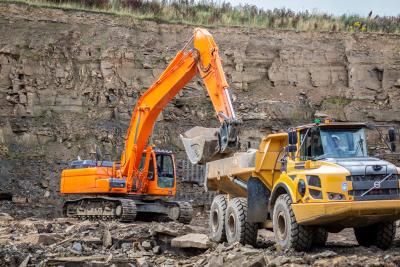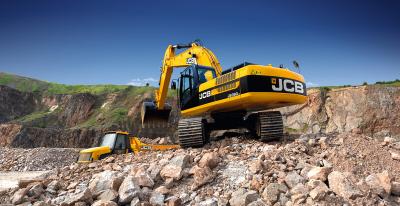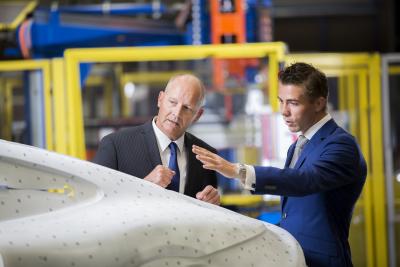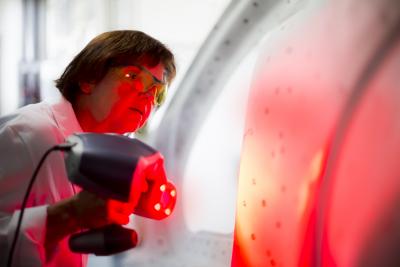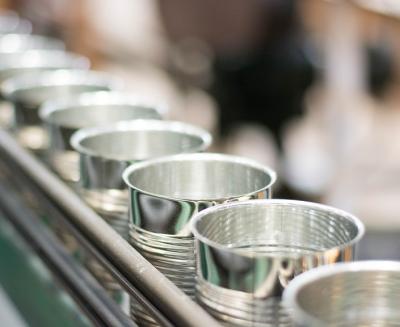Information on all of our sustainability policies and practices which are common across all of our sites, from which we serve the UK construction market.
We recognise that climate change is one of the most pressing issues the world faces today and have developed a vision in response to this challenge.

General
- Greenhouse gas emissions
- Resource use and waste management
- Water extraction and use
- Transport impacts
- Employment and skills
- Local communities
Greenhouse gas emissions
Carbon dioxide is a natural by-product of the steel-making process. Carbon, in the form of coke and coal, is used as a chemical reductant in the blast furnace to reduce iron oxide to iron. This turns the carbon into carbon monoxide and carbon dioxide. When we burn gas produced in the blast furnace as a fuel to heat our processes, this produces more carbon dioxide.
Of course, we also use purchased energy products such as natural gas and electricity in our operations which results in further emissions of carbon dioxide, either on our sites or at the power stations generating the electricity we purchase.
We measure our CO2 intensity according to the World Steel Association methodology and report for the Tata Steel Group. The average carbon dioxide emissions performance of our steel-making sites is in the top 25% of the global steel industry, according to the latest worldsteel benchmarking data.
We recognise that climate change is one of the most pressing issues the world faces today and have developed a vision in response to this challenge. This states that Tata Steel is committed to being part of the solution and will achieve a leading position within the steel industry whilst creating value through:
- Continuing to improve its current processes
- Investing in breakthrough technologies
- Developing new products and services to reduce environmental impact over the product lifecycle, offsetting emissions in manufacture
- Actively engaging its workforce
- Further developing its pro-active role in global steel sector initiatives.
Points (1), (2) and (4) of this vision have the objective of reducing process CO2 emissions associated with manufacturing operations; as described below.
Improvements to current processes with respect to CO2 emissions include, where possible:
- Burden management/productivity e.g. maximising production volume from existing plant, reducing fuel rate, use of higher grade ores/coals and using pellet rather than sinter. These changes are usually driven by production volume needs, process economics and product requirements.
- Minimising iron consumption per tonne of finished product e.g. by increasing the scrap to (virgin) iron ratio; again, this is usually driven by process configuration/production volume needs. Maximising yield, especially in downstream processes, is also important here.
- Implementing high CapEx projects using existing technology, e.g. high efficiency power stations, improved collection and use of the energy contained in by-product gases, blast furnace top gas recovery turbines.
- Applying rigorous energy management e.g. advanced monitoring and targeting, better process control, high efficiency lighting and motors, variable speed drives, hot connect (between steel caster and rolling mill), improved employee engagement.
- Regarding this last point, the company puts a strong emphasis on energy management and has in place an energy governance mechanism, led by the Chief Technical Officer and driven by the managing directors of the manufacturing hubs and group functions. Energy management policy is encompassed within a mandatory foundation policy on Environment that is core to the governance framework of the company.
At manufacturing sites, the policy requires the implementation of energy and environmental management systems. The latter must be certified to conform to the international standard ISO 14001. The energy management system may form part of the overall environmental management system, but must be in-line with the international standard ISO 50001 (or an approved equivalent) and is subject to internal audit by a pool of energy specialists and subject to senior management review.
The importance has been recognised of taking an holistic 'total cost of ownership' approach to drive the purchase of energy efficient equipment, to the extent that specific, detailed, company policies have been developed for the high-impact technologies such as energy efficient lighting and motors. These policies empower employees to make purchasing decisions based on total lifetime impact, rather than initial cost, and their quality has been recognised by the UK Carbon Trust.
An industry-leading system, ‘MoniCA’, for monitoring and targeting energy consumption and CO2 emissions, has also been developed. This has been used to compare actual performance with industry best practice; the improvement opportunity identified has driven manufacturing units to critically review and improve their energy reduction plans. MoniCA complements site-wide energy sub-metering systems. The latter allow consumption to be analysed in a greater level of detail, preferably through automated data logging facilities that record the variation in the rate of energy consumption with time. Such systems are a vital part of an energy management system.
In 2015 we set up a full-time team to deliver a five-year programme of Energy Efficiency Waves. Each Wave is an intensive 14-week process covering either part of one of our larger sites, or the whole of a smaller site. Working in close cooperation with people from all functions and departments, Wave teams conduct a comprehensive assessment of the energy performance of our operations to highlight areas of waste and improvement opportunities. A Wave comprises four phases: data gathering and analysis, ideas generation, measure development, implementation; delivering a prioritised plan of measures to give maximum business benefit. This programme has typically identified over 10 per cent cost reduction on the consumption of electricity, natural gas and technical gases (O2, N2, Ar etc.). Measures include more effective start-stop protocols, process optimisation, variable speed drives, efficient motors and lighting. As well as implementing technical improvements, strong emphasis is also placed on raising the awareness, engagement and motivation of employees on energy. It also embeds and sustains energy management practices, aligned to the international energy management standard ISO 50001.
However, with limited scope for achieving further substantial CO2 emission reductions from conventional ironmaking processes, a step-change in emissions can only be achieved by finding a completely new technological path for the production of hot metal, away from the blast furnace route. Tata Steel is playing a leading role to reduce carbon emissions in steelmaking. In 2010 Tata Steel Europe built the €20m HIsarna pilot plant at our IJmuiden integrated steelmaking site in the Netherlands. HIsarna’s revolutionary cyclone converter-based ironmaking process directly converts iron ore fines and coal into iron. This avoids the need for agglomeration (collection into a cluster or mass) pre-treatment of the ore via sintering or pellet making and the need for coke making from coal. This new technology could reduce CO2 emissions by 20 per cent compared to conventional ironmaking. Used in combination with carbon capture and storage techniques, it should be possible to achieve CO2 reductions of up to 80 per cent. The project is currently in its second phase. This aims to demonstrate HIsarna feasibility under large-scale, industrial production conditions. During this phase we will also assess the opportunity to use this technology to recover zinc from zinc coated steel scrap. If successful, this technology will contribute enormously to the creation of a low carbon, circular economy.
Point (4) of our vision recognises the importance of its workforce. To this end, there is a mature, global network of energy professionals across the wider Tata Steel group, who take part in a programme of meetings to facilitate the sharing of good practice. This led to the development of a highly successful energy-training course, specific to the needs of the steel industry, to equip employees with the tools to save energy in their own areas of influence.
Making energy consumption understandable, transparent and within the individual’s control is recognised as key to ensuring that each member of the wider work force actively contributes. To address this, there are local employee engagement initiatives, poster campaigns and a well established ‘Energy and Climate Change’ website on the company Intranet, to inspire people to take positive action to conserve energy.
CO2 Intensity, all TSE Steelmaking, worldsteel Scopes 1+2+3 (using verified EU-ETS data and other sources)
| 2016 | 2017 | 2018 | 2019 | |
| tCO2/tcs | 1.95 | 1.97 | 1.98 | 1.98 |
Resource use and waste management
Integrated steelmaking requires large amounts of raw materials such as iron ore and coal. It is vital that we continue to optimise our consumption of these raw materials by minimising waste and ensuring that our by-products meet tight quality control requirements so that they can be used in other industry sectors.
Our most significant by-product, in terms of volume, is blast furnace slag. This has now become a valuable raw material for the concrete industry, where it is used as a clinker substitute, thus reducing mineral extraction and CO2 emissions at the same time.
Steelmaking slag is used extensively in civil engineering and agricultural applications, and tar and benzole from our coke-making processes are used within the chemicals industry. We apply advanced techniques at all our integrated steelworks to extract valuable components such as iron and carbon, by reusing most of our residual materials through sinter plants, BOS plants and coke ovens. Some waste from our operations is unavoidable, but our aim is to ensure that as much as possible can be reused, recycled or recovered.
Yield optimisation is a key element in managing resources efficiently and we have in place comprehensive programmes for measuring consumption, reviewing performance, identifying benchmark consumption levels and targeting measures for filling the gap with the benchmark.
We always strive to minimise waste by optimising the use of all consumables.
In a steel sector context, there is little opportunity to deviate from using the basic raw materials associated with the process. In ancillary processes there is more opportunity to choose preferential procurement of abundant and renewable materials over those that are non-renewable or scarce.
For the materials that cannot be reused or sold then disposal is the final option, our target is to reduce waste to landfill by 10% year on year. In 2005, we landfilled over 1Mt of waste. In 2014/15, we landfilled less than 25% of that figure. Even allowing for a reduced operational footprint, this has been a notable achievement.
Steel, for over a hundred years, has been one of the most ‘circular’ of materials, particularly on account of its impressive performance at ‘end-of-life’. It is the most recycled material in the world and recycled steel is used in the manufacture of all new steel. It has been recycled for over 150 years, as a result of which the steel recycling process and infrastructure is highly efficient and economical.
Very little steel ever goes to landfill or becomes waste, yet there is only enough scrap steel arising globally to meet 30 - 40% of the demand for new steel. Hence, a key to improving resource use for steel is to focus on further improving the recovery rate at end-of-life, rather than demanding a higher recycled content in steel products. Tata Steel has an excellent track record in addressing this, encompassing process improvements, product developments, modelling studies, as well as numerous communication and engagement activities.
The global average recycling rate for all steel is estimated to be in the region of 80%, higher in sectors such as construction and automotive. In construction a UK study showed that 94% of steel is recycled when a building is demolished and 99% of structural steel is recycled or re-used. In the packaging sector, the recycling rate for steel packaging in Europe was 74% in 2012, significantly higher than other packaging materials. Through its organisation Tata Steel Packaging Recycling, the Company is active in supporting initiatives to further improve this figure, including:
- Providing equipment such as steel packaging collection facilities;
- Metal Matters, helping Local Authorities promote their kerbside metal recycling, further information at: http://metalmatters.org.uk/;
- Every Can Counts, working in supporting people to recycle whilst away from their homes http://www.everycancounts.co.uk/
- Education in schools and the community (e.g. Yes You Can)
The Company has also invested in new product development to give environmental and sustainability improvements. Advanced coatings are continually being developed that extend the lifetime and reduce the maintenance requirements of steel products in service, whilst progressively phasing out harmful substances. Our new product for automotive, construction and other applications, MagiZinc®, delivers improved corrosion resistance with up to half the thickness of a conventional zinc coating. High strength steels allow the same function to be achieved for less material.
Life Cycle Assessment (LCA) is used to model the environmental impacts associated with the manufacture, use and end-of-life of products and services. Our world-leading team of experts applies LCA to our steel products and includes the modelling of the full life cycle, including recycling. Several tools we have developed, such as CLEAR (Construction Lifecycle Environmental Assessment Resource), also include the functionality to model re-use of steel and other materials at end-of-life.
The products we make can have a far greater impact than the combined impacts of the processes we use to make them. At Tata Steel, we produce a range of products to make buildings more efficient. Our wide range of structural products enables design efficiency, while our building envelope products are the most durable available. Our latest products are designed to harness energy, turning buildings into energy generators and bringing the goal of zero carbon building ever closer.
Beyond these activities, Tata Steel is also fully engaged in several activities aligned with concepts of material efficiency and the circular economy. These include:
- Sponsoring a PhD students at the University of Cambridge on material efficiency and circular economy topics.
- Tata Steel is Work Package leader in the STYLE project reviewing approaches for assessing the resource efficiency and overall sustainability of new product developments (www.spire2030.eu/style).
- Stakeholder at workshop on ‘Supporting Excellence in UK Remanufacturing’: https://connect.innovateuk.org/documents/22449725/0/Stakeholder%20dialogue%20report
As part of engaging and educating the supply chain Tata Steel's Customer Technical Services deliver in house training to designers, specifiers and architects on the efficient use and design of steel. These sessions are CPD accredited and delivered by chartered structural engineers.
Water extraction and use
Relatively large volumes of water are used in making steel, but most of this is for non-contact cooling and returned to the source with no loss of quality. The precise volume of fresh water consumed is difficult to quantify because our sites often cover large land areas and capture substantial amounts of rainwater.
We are very conscious, however, that fresh water is a finite and increasingly valuable resource, and we are developing a tool that will provide a more accurate measure of fresh water consumed per tonne of steel produced. This will enable us to target additional water efficiency schemes where they are most needed.
BES 6001 requires waste and water output to be reported on an intensity basis. Due to the way the business operates it is impossible to allocate directly to each product group and therefore intensity is total waste produced or water abstracted divided by total product invoiced deliveries of a particular site. This means products and processes not included in the scope of the standard are included in the intensity figures.
As some sites produce products for further processing at downstream sites the waste generated or water abstracted is not transferred to the downstream site. This means these figures cannot be compared against each other or other producers and are for local benchmarking purposes only. In order to understand the true product specific environmental burden then reference should be made to LCA assessments for our products. Further information on LCA is available on request.
| Waste (t/t product) | ||||
| Site | Calendar year 2016 |
Calendar year 2017 |
Calendar year 2018 |
Calendar year 2019 |
| Catnic | 0.00193 | 0.00359 | 0.00385 | 0.00265 |
| Corby | 0.00135 | 0.00069 | 0.00079 | 0.00057 |
| Hartlepool | 0.00011 | 0.00013 | 0.00039 | 0.00021 |
| Llanwern | 0.00039 | 0.00047 | 0.00029 | 0.00019 |
| Port Talbot | 0.00323 | 0.00515 | 0.00708 | 0.00491 |
| Shotton | 0.00256 | 0.00187 | 0.0024 | 0.00444 |
| Trostre* | - | - | 0.01336 | 0.02570 |
| Water (m3/t product) | ||||
| Site | Calendar year 2016 |
Calendar year 2017 |
Calendar year 2018 |
Calendar year 2019 |
| Catnic | 0.202 | 0.218 | 0.199 | 0.199 |
| Corby | 1.094 | 0.813 | 0.877 | 0.671 |
| Hartlepool | 0.474 | 0.407 | 0.580 | 0.680 |
| Llanwern | 2.603 | 2.309 | 1.829 | 1.679 |
| Port Talbot | 5.782 | 5.057 | 6.262 | 6.562 |
| Shotton | 0.653 | 0.569 | 0.814 | 1.341 |
| Trostre* | - | - | 4.489 | 4.590 |
*Trostre added to the BES 6001 certification in 2019
Transport impacts
The impacts associated with the transportation of our raw materials to our manufacturing sites, intra-site transfers of semi-finished material, delivery of our products to customers and business travel are relatively small when set against the footprint of our manufacturing operations. Nevertheless, we have an environmental policy commitment to reduce continuously the environmental impact of our operations and products through the adoption of sustainable practices and, for this reason; we seek to measure our transport impacts and to progressively reduce them.
A single department within Tata Steel Group manages shipping and logistics operations. It has established an objective to maintain the highest safety standards for Tata Steel and its stakeholders and constantly to strive to be a global leader in reducing carbon footprint.
A series of strategies have been developed to deliver this objective, for example.
For raw material shipping:
- Work with the strategic raw materials supply chain to reduce CO2 and fuel usage by 10% over a 5 year period
- Maximising the use of chartered vessels in order to optimise fuel consumption (by scheduling journeys to facilitate running at lower speeds)
- Optimising journey planning to link outward journeys with return legs and using multiple drops
For intra-site transfers of semi-finished products and deliveries of products to customers:
- Enacting modal shift (from road to rail / canal)
- Road haulage load weight optimisation
- Linking outward journeys with return legs to minimise empty running rate
- Improving the efficiency of the contracted and sub-contracted haulage fleet
- For rail this has included using synthetic brake pads to reduce noise and stop/start technology to reduce diesel consumption
Because we manage shipping and logistics through a central function, it is not possible to provide transport impacts data per product group or by site. The figures in the table show during calendar year 2014, we estimate that the CO2 emissions of our shipment of primary raw materials, the transportation of products and semi-finished products within the UK and business travel associated with the UK were approximately 533,000 tonnes. A more detailed breakdown is provided in the table below.
Table showing estimated emissions associated with transportation of iron ore, delivery of products and business travel:
| Raw Material Shipping Global Emissions |
Units | Calendar year 2018 | Calendar year 2019* | Calendar year 2020 |
| Total Raw Material Shipping CO2 Emissions |
tCO2e | 519,816 | 628,732 | 434,186 |
| Delivery of products and semi finished products in the UK |
Units | Calendar year 2018* | Calendar year 2019 | Calendar year 2020 |
| Total UK Road Transport Emissions | tCO2e | 21,353 | 22,428 | 14,039 |
| Total UK Rail Transport Emissions | tCO2e | 23,811 | 21,600 | 22,509 |
| Total UK Shipping Transport Emissions | tCO2e | 13,592 | 32,255** | 15,939 |
| Total Product Delivery Emissions | tCO2e | 58,756 | 76,283 | 52,487 |
| Delivery of products and semi finished products from MLE |
Units | Calendar year 2018 | Calendar year 2019 |
| Total MLE Road Transport Emissions | tCO2e | 39,922 | 43,185 |
| Total MLE Sea Transport Emissions | tCO2e | 65,581 | 77,519 |
| Total MLE Rail Transport Emissions | tCO2e | 9,109 | 9,157 |
| Total MLE Inlan Barge Transport Emissions | tCO2e | 17,174 | 16,520 |
| Total Product Delivery Emissions | tCO2e | 131,787 | 146,382 |
| Business Travel Emissions | Units | Calendar year 2018 | Calendar year 2019 | Calendar year 2020 |
| UK Road Travel | tCO2e | 1,448 | 1,168 | 352 |
| UK Rail Travel | tCO2e | 48 | 34 | 5 |
| Total Air Travel | tCO2e | 1,899 | 2,556 | 704 |
| Total Business Travel Emissions | tCO2e | 3,392 | 3,758 | 1,061 |
| Business Travel MLE Emissions | Units | Calendar year 2018 | Calendar year 2019 | Calendar year 2020 |
| MLE Air Travel | tCO2e | 1,971 | 2,755 | |
| MLE Road Travel | tCO2e | 757 | 758 | |
| MLE Rail Travel | tCO2e | 11 | 35 | |
| Total Business Travel Emissions | tCO2e | 2,739 | 3,548 |
| Units | Calendar year 2018 | Calendar year 2019 | Calendar year 2020 | |
| Total Transport Emissions | tCO2e | 803,520 | 858,703 | 487,734 |
*Calculation methodology has changed in 2018 giving a more accurate CO2 emission figure. MLE values for Product and Business will be add once the are fully calculated.
** Significant increases in volume of productsshipping to the Spanish region has meant a rise in CO2 emissions.












